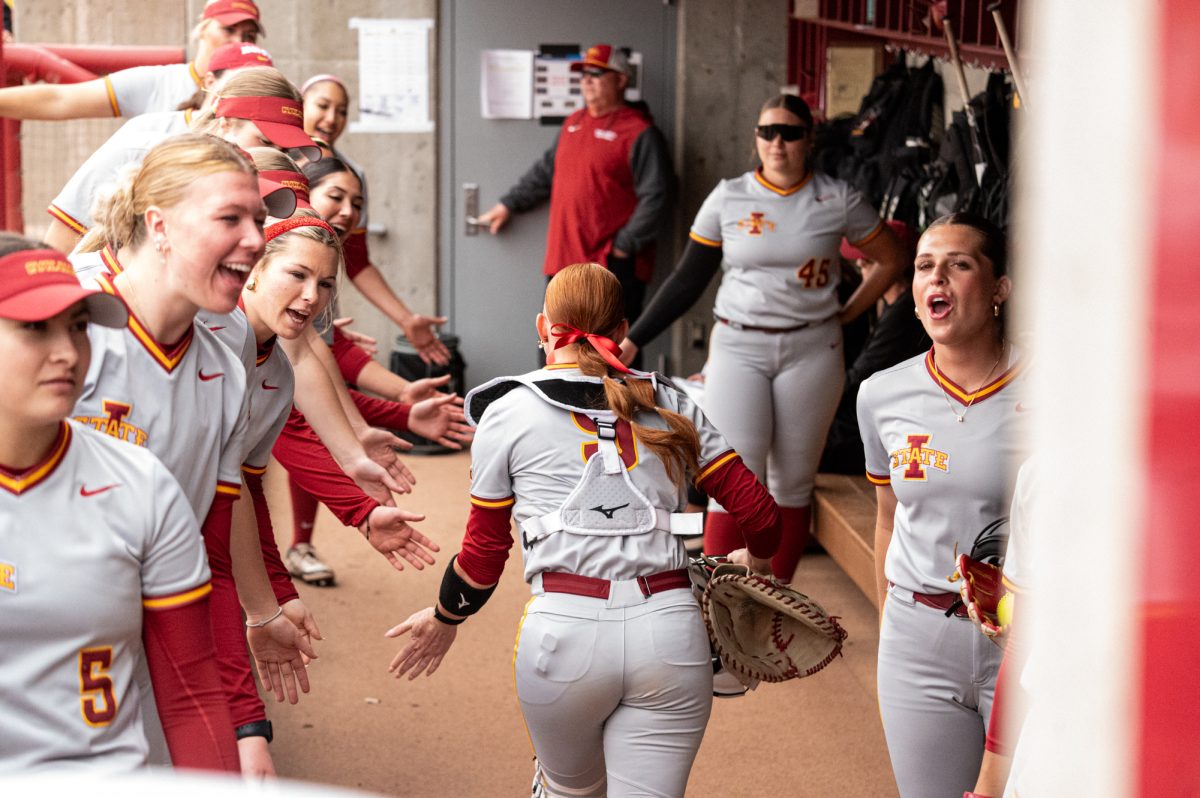Letter: Critiquing the “Marston Muses”
August 6, 2018
Hundreds of young men flock to Iowa State each year to study engineering, not because it is their passion but because they believe it will provide them with financial stability.
Do not misunderstand this statement. There are plenty of passionate engineers at Iowa State, but there are nearly as many dispassionate engineers among us. Somewhere near the root of this desire for financial stability lies traditional family values pushing on the psyche of these young men.
It is natural for straight middle class men to desire women they deem beautiful and imagine beginning a family with them. Financial stability and, as an extension, a practical education such as engineering are regarded as a step toward the establishment of a traditional family.
Adorning the pediment of Iowa State’s engineering building, Marston Hall, are four figurative sculptures deemed the “Marston Muses.”
These figures are women, idealized and beautiful in a classical sense. Each represents a branch of engineering at Iowa State from 1900, the time of their creation. These are mining, civil, mechanical and electrical engineering. Each muse holds attributes or tools from their respective fields. The muse for mining holds a pickaxe, mechanical has a cog and so on.
The purpose of these muses is to symbolize the allure that the engineering profession holds in the minds of its students. These figures draw students into Marston Hall, positioned high above the main entrance, and welcome them to the classroom.
Yet two of the muses not only hold their attributes, but have their robes slipping down one shoulder and revealing a bare breast. This is a rather typical motif for muses in art history, as they personify the passion and desire one has toward their work. This unchecked passion often includes sexual desire that comes from a history of male artists situating their wives or mistresses as muses driving the creation of the work.
Seen in 1900, these exposed breasts would have fit in nonchalantly with the nudity of the art deco and neoclassicism predominate in art of the period. Seen today, in a post-feminist world, it is easy to read the muses as seducing the students into the field of engineering.
The “Marston Muses” are the personification of the factors that drive students to enroll in the engineering department. The fact they take the form of classically beautiful women exposing themselves and carrying the tools students will have to use reinforces the theoretical dispassionate engineer along their path toward the traditional family through a “practical” education.
Whether subconscious or overtly acknowledged, the muses have the potential to place in the mind of this student that they will one day enter a family unit with a woman of equivalent beauty to these figures as a result of their studies. The rhetoric surrounding studies should always focus first on content rather than potentiality, but universities have increasingly focused on placement percentages and similar statistics over the years.
The muses seem to be telling students to enroll in the engineering department not because of the content but because it is a promising field for those who wish to establish a traditional family. The statues fail to instill passion for engineering, preferring to disguise it behind the nudity and beauty of classical women.
To prevent operating at the behest of sensationalism, I must postface my reading of the “Marston Muses.” The muses are great works of publica art from this institute’s history and deserve their position atop our engineering building. This critique is meant to push viewers toward awareness of the biases and shortcomings of art in the past and, thus, in the future.
The viewer is always in a position to triumph over and alter the discourse on an artist’s intent without altering the art. After all, this country’s flag means one hundred different things to any ten different people.







